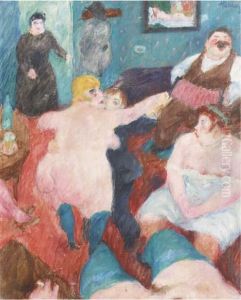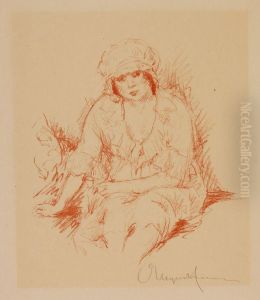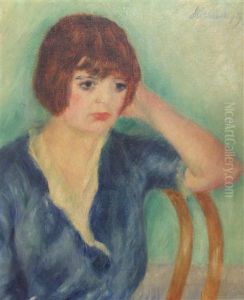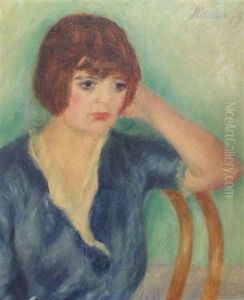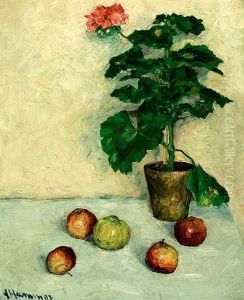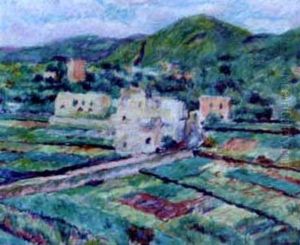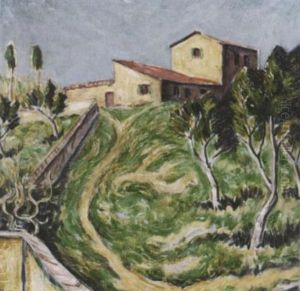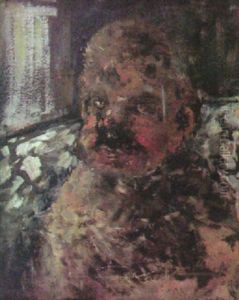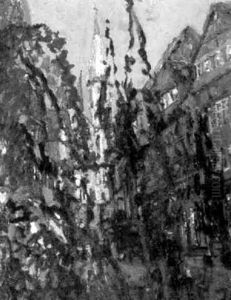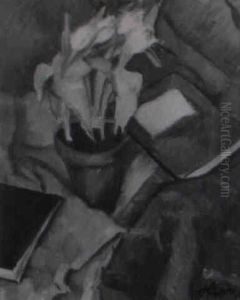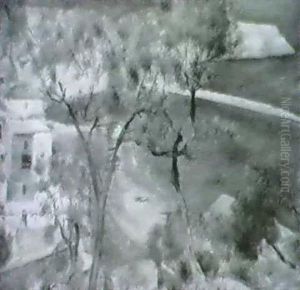Eugen Hamm Paintings
Eugen Hamm was a German painter and graphic artist known for his involvement in the New Objectivity (Neue Sachlichkeit) movement, which emerged in Germany in the 1920s as a counterpoint to Expressionism. This movement was characterized by a realistic and sometimes critical portrayal of modern life, often with an emphasis on the alienation of individuals in the new urban environment.
Hamm was born on May 11, 1890, in Hanau, Germany. He studied at the Frankfurt School of Art and later at the Weimar Academy. His early work was influenced by Impressionism, but after World War I, like many of his contemporaries, he became disillusioned with existing artistic styles that seemed disconnected from the harsh realities of the time. This led him to adopt a more realistic approach to his art, reflecting the sober mood of the post-war era.
Throughout the 1920s and 1930s, Hamm's work depicted the social realities of the Weimar Republic with a focus on the human figure, rendered with a cool detachment and often imbued with a sense of satire or social critique. His paintings often included portraits, nudes, and scenes of urban life, and he was known for his skillful use of light and shadow to enhance the emotional impact of his work.
With the rise of the Nazi regime, artists associated with the New Objectivity movement faced persecution, and many of their works were condemned as degenerate art ('Entartete Kunst'). Like many artists of his generation, Hamm's career was significantly impacted by the political climate of the time. It became increasingly difficult for him to work and exhibit his art.
After World War II, Hamm continued to paint, although his post-war work is less well-known and documented. His style became more subdued, and he turned to landscapes and still lifes, distancing himself from the overt social commentary of his earlier work. Eugen Hamm passed away on September 14, 1974, in Hamburg, Germany.
Despite not being as widely recognized as some of his contemporaries, Eugen Hamm's work remains an important example of the New Objectivity movement, reflecting the social and political upheaval of the interwar period in Germany. His contributions to the development of 20th-century German art continue to be studied and appreciated by art historians and collectors.
